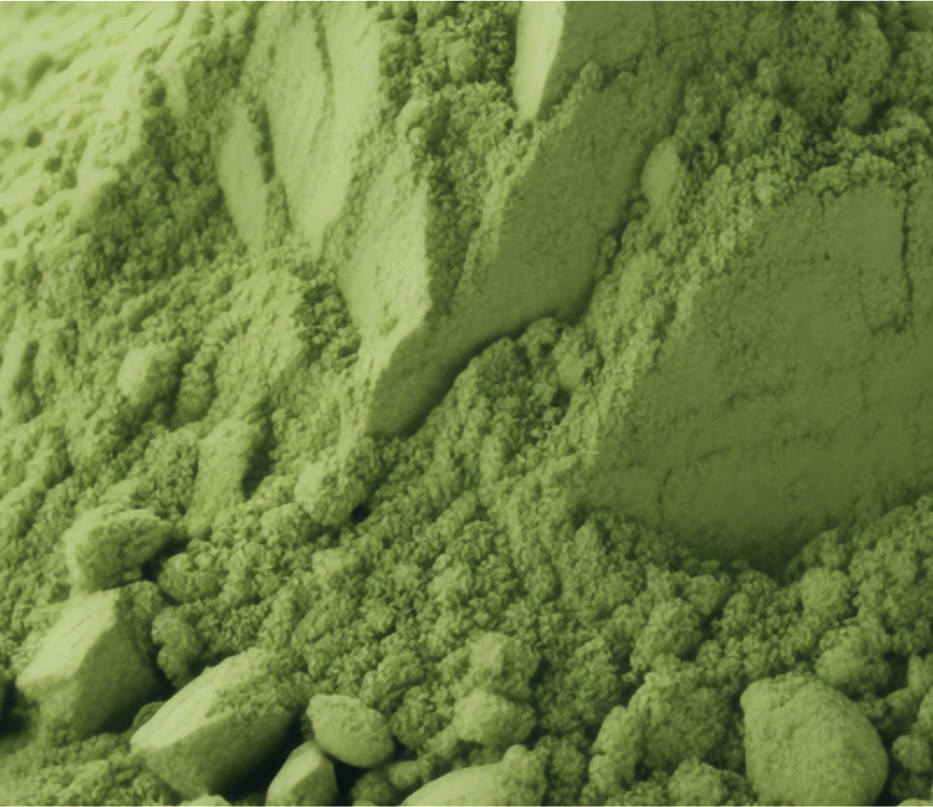
MICROALGAE
Microalgae, the unsung heroes of our aquatic ecosystems, play a pivotal role in our planet's delicate balance. These tiny organisms, often invisible to the naked eye, are at the base of the food chain that sustains life underwater. With over 70,000 diverse species thriving in various environments such as oceans, lakes, glaciers, and even deserts, microalgae exhibit a fascinating spectrum of colors, forms, and various molecules.
The breathtaking aquatic photosynthesis process, performed by microalgae, significantly contributes to Earth's well-being. Capturing a staggering 50% of the planet's carbon dioxide and releasing life-enabling oxygen, these microscopic powerhouses showcase their exceptional capability to influence our environment.
But microalgae's significance doesn't stop there. These unassuming organisms hold immense potential to revolutionize sectors far beyond the realm of water, such as Cosmetic, Food, Animal Feed, Aquaculture, Health, Biomaterials, etc. Our mission at Neo Earth is to harness this potential by creating cutting-edge solutions that not only improve the microalgae industry itself but also contribute to a greener and more sustainable future.
Our groundbreaking solutions are set to transform the way we perceive and utilize microalgae – from enhanced strains that boost productivity to innovative production systems that redefine accessibility. Witness the fusion of nature and technology as we pave the way for a brighter, eco-conscious tomorrow.

Problem
The main problem addressed by Neo Earth is the low productivity of traditional microalgae strains used by biomass producers, impacting their profitability, as production costs are therefore high.
Microalgae have vast potential as renewable resources for feed, food, biofuels, pharmaceuticals, biomaterials and cosmetics. However, the current low yields lead to high production costs, limiting their competitiveness against CO2-emitting alternatives.
This unmet need for higher productivity and cost-effectiveness hampers the widespread adoption of microalgae as a sustainable alternative.
Species
Among the numerous species, we focus on harnessing the capabilities of renowned microalgae. These microorganisms are prized for their unique characteristics and valuable molecules, such as rich nutritional profiles (DHA, proteines,…) or pigments (astaxanthin,…).
Our research includes a wide array of microalgae with distinct attributes. Each species offers a wealth of possibilities that can be harnessed for various applications across industries.
THE EARTH IS WHAT
WE ALL HAVE IN COMMON
Application
Cosmetics
Microalgae are prized for their natural pigments, antioxidants, and moisturizing properties. They find their way into skincare products, providing multiple benefits.
Nutraceuticals
Rich in essential nutrients, microalgae are integrated into dietary supplements, delivering health-boosting compounds like omega-3 fatty acids, vitamins and antioxidants.
Pharmaceuticals
Specific microalgae species produce bioactive compounds that have potential applications in drug development and disease treatment.
Fertilizers
Microalgae-based fertilizers enrich soil with essential nutrients, enhancing crop growth and yield.
Animal Feed
The high protein content of certain microalgae species makes them an excellent source of nutrition for livestock, aquaculture, and even pets.
Bioplastics
Microalgae's ability to store energy-rich compounds can be harnessed to produce bioplastics, reducing our reliance on petroleum-based plastics.
Biofuels
Some microalgae strains produce lipids that can be converted into biofuels, offering a sustainable alternative to fossil fuels.
Water Purification
Microalgae play a role in nutrient removal from water bodies, contributing to improved water quality
Food Additives
Microalgae contribute natural colorants and nutritional value to food products, enhancing their visual appeal and health benefits.
Wastewater Treatment
These organisms have a natural ability to absorb heavy metals and pollutants from water, making them a tool for wastewater treatment.
Carbon Capture
Through photosynthesis, microalgae can capture carbon dioxide, providing a potential solution for carbon capture and mitigating climate change.
Benefits
Multifaceted Benefits of Microalgae
Microalgae offer a host of advantages that span beyond individual sectors, benefiting the planet, humans, animals, and more:
For the Planet
CO2 Capture - Microalgae are potent photosynthesizers, capturing substantial amounts of carbon dioxide from the atmosphere, transforming CO2 in calcaire, leading to a long term capture to the latter in the sea. Helping combat climate change.
Oxygen Production - Through photosynthesis, microalgae release oxygen as a byproduct, contributing to the Earth's oxygen supply.
Waste Utilization - Microalgae can be cultivated using wastewater or industrial emissions, effectively transforming waste into valuable biomass.
For Animals
Livestock and Aquaculture Nutrition - Microalgae provide a sustainable and protein-rich feed source for livestock, aquaculture, and even pets.
Healthy ecosystem - microalgae are foundational to aquatic food chains, supporting marine life and maintaining balanced ecosystems.
For Humans
Nutritional Powerhouses - Microalgae are rich sources of vitamins, minerals, and essential nutrients, supporting human health and well-being.
Medical Potential - Bioactive compounds found in certain microalgae have shown potential in pharmaceutical research, offering solutions for various health conditions.
Sustainable Food Source - As a nutrient-dense food source, microalgae have the potential to supplement traditional diets and address global food security challenges.
For Industries
Eco-friendly Alternatives - Microalgae-based products serve as sustainable alternatives to resource-intensive and CO2-emitting industries, contributing to a more environmentally conscious future.
Cost-Effective Solutions - Neo Earth is revolutionizing the microalgae sector providing efficient solutions.

Challenges
While microalgae hold tremendous potential, they also present challenges that require innovative solutions.
Strain Selection - Identifying and optimizing the right strains for specific applications demands thorough research and selection processes.
Cultivation Efficiency - Achieving consistent and high yields requires precise control of environmental factors like light, nutrients, and temperature.
Contamination Control - Maintaining purity in microalgae cultures is crucial to avoid contamination that can impact productivity.
Economic Viability - Balancing production costs with market demand and pricing remains a challenge for commercial viability.



















